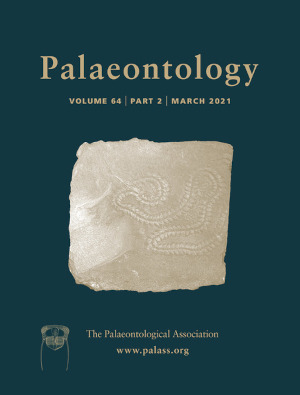Reg. Charity No. 1168330

The fossil record of non-biomineralized animals and tissues provides important insight into deep-time evolutionary events. Interpretation of these highly variable remains requires an understanding of how both decay and preservation lead to fossilization. Here we establish a quantitative approach that unites data from decay experiments of extant taxa with preservation mode of fossils, allowing evaluation of both information loss and information retention, and their interaction, in non-biomineralized fossils. We illustrate our approach using fossil data from two Lagerstätten with distinct taphonomic regimes, one characterized by phosphatization, and the other by pyritization of non-biomineralized tissues. This demonstrates that frequency of occurrence of characters in fossil taxa is significantly correlated with sequences of character decay observed in extant comparator organisms, and that decay prone and decay resistant characters have distinct preservation modes; the former are mineralized and the latter are organically preserved. The methods and principles applied here to non-biomineralized vertebrates are applicable to other exceptionally-preserved fossils and allow for identification of systematic biases in fossil specimen completeness, character retention and the mode of their preservation. Furthermore, our analyses validates experimental decay in supporting the interpretation of anatomy in non-biomineralized fossils.
AcknowledgementsWe thank Johanne Kerr and Olivier Matton at the Musée d'Histoire Naturelle, Miguasha and Kevin Seymour (Royal Ontario Museum) and Bill Simpson (Field Museum) for curatorial expertise and specimen access. Funded by NERC grants to SG & MAP (NE/E015336/1) and MAP & SG (NE/K004557/1). We especially thank Derek Briggs, James Schiffbauer and an anonymous reviewer for insightful reviews.
MAP is currently Chair of the Editorial Board, and RSS is a current Handling Editor for Palaeontology. No author was involved in the peer review or decision making processes for acceptance of this paper, both of which were overseen by Dr Barry Lomax.
Conceptualization Gabbott, Purnell, Sansom; Data Curation Gabbott, Sansom; Formal Analysis Purnell, Sansom, Gabbott; Funding Acquisition Gabbott, Purnell; Investigation Sansom, Gabbott, Purnell; Methodology Purnell, Sansom, Gabbott; Project Administration Sansom; Resources Johanne Kerr and Olivier Matton (Musée d'Histoire Naturelle, Miguasha), Kevin Seymour (Royal Ontario Museum), Bill Simpson (Field Museum); Supervision Gabbott, Purnell; Validation Purnell; Visualization Gabbott, Purnell, Sansom; Writing – Original Draft Preparation Gabbott, Sansom, Purnell; Writing – Review & Editing Purnell, Sansom, Gabbott.